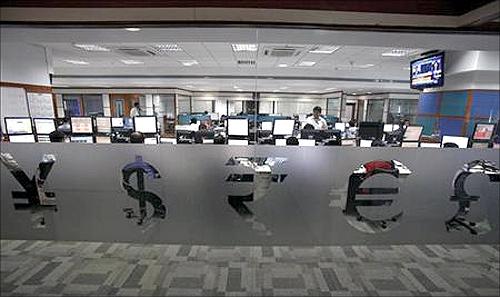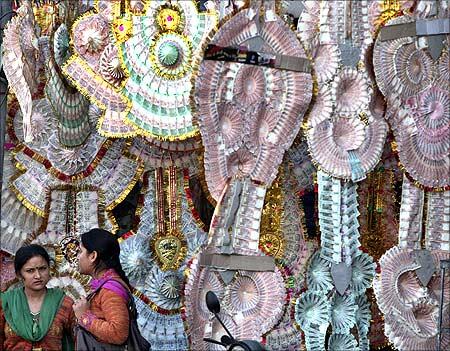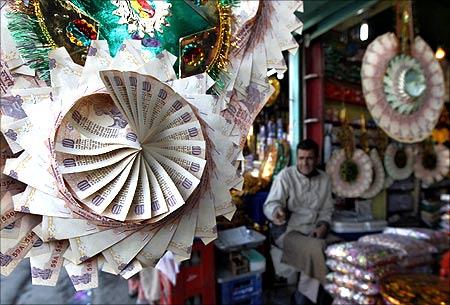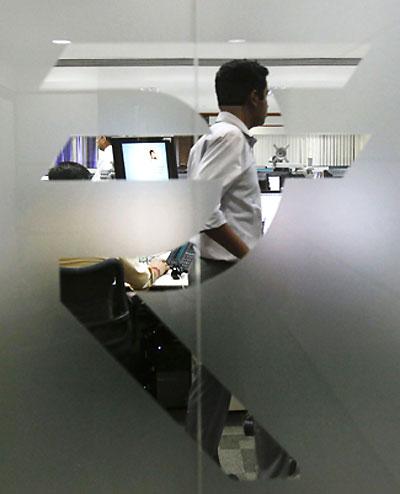Photographs: Vivek Prakash/Reuters Malini Bhupta in Mumbai
If policymakers needed any further evidence on how precarious macro economic variables are then the rupee's slide since May should suffice.
For long, optimists have believed foreign capital flows would sustain and support the currency, but the rupee's 8.24 per cent fall since May rebuts the theory.
. . .
Quick-fix solutions to manage rupee may not work
Image: Women stand next to a shop selling garlands made of Indian currency notes.Photographs: Mukesh Gupta/Reuters
While there are several factors that contributed to the rupee's fall, the withdrawal of $2 billion from the debt markets and likelihood of the US Federal Reserve tapering off its bond purchases triggered it off.
The lack of clarity on withholding tax added to the selling.
The fall in bond yields and the central bank's rate cuts also made Indian debt relatively less attractive.
Also, lack of any greenshoots seemed to have affected flows.
No doubt, the rupee's depreciation is good news for the real economy from a long-term point of view, but a weak currency increases upside risks to inflation and the twin deficits.
. . .
Quick-fix solutions to manage rupee may not work
Image: A shopkeeper counts Indian currency notes inside his shop in Jammu.Photographs: Mukesh Gupta/Reuters
Sonal Varma of Nomura has estimated that a 10 per cent fall in the rupee can push up the wholesale price index by 60-80 basis points, the current account deficit by 0.4 per cent of gross domestic product and fiscal deficit by 0.2 per cent.
Indian imports are inelastic and, therefore, a sustained weakness in the rupee would pump up the import bill and increase external risks.
This makes it imperative for policymakers to take steps that would stem the currency's slide.
So, how many levers do policymakers have to manage the currency?
. . .
Quick-fix solutions to manage rupee may not work
Image: A Kashmiri shopkeeper sits near garlands made of Indian currency notes at a market in Srinagar.Photographs: Fayaz Kabli/Reuters
Economists say there are several things the government can do to make the rupee less vulnerable to such shocks.
A short-term measure would be to cut the withholding tax to five per cent from 20 per cent, which has already been done.
Another easy solution would be to increase foreign investment limit in government debt.
However, this is not enough to support a fragile rupee.
The government can also relax external commercial borrowing norms, but that may come with its own risks.
. . .
Quick-fix solutions to manage rupee may not work
Photographs: Anindito Mukherjee/Reuters
Rahul Bajoria and Sidhartha Sanyal, economists at Barclays, believe the government might consider further liberalisation of foreign direct investment norms, easing foreign institutional investment limit in debt and issuing government bonds in foreign currencies and/or rupee bonds offshore.
The government would sooner or later have to liberalise sectors like defence, telecom and asset reconstruction to attract stickier FDI flows.
Economists believe a consensus seems to be emerging on issuance of sovereign or rupee-denominated bonds for non-resident Indians.
Economic reforms would be the best option, if the government can push these through.







article